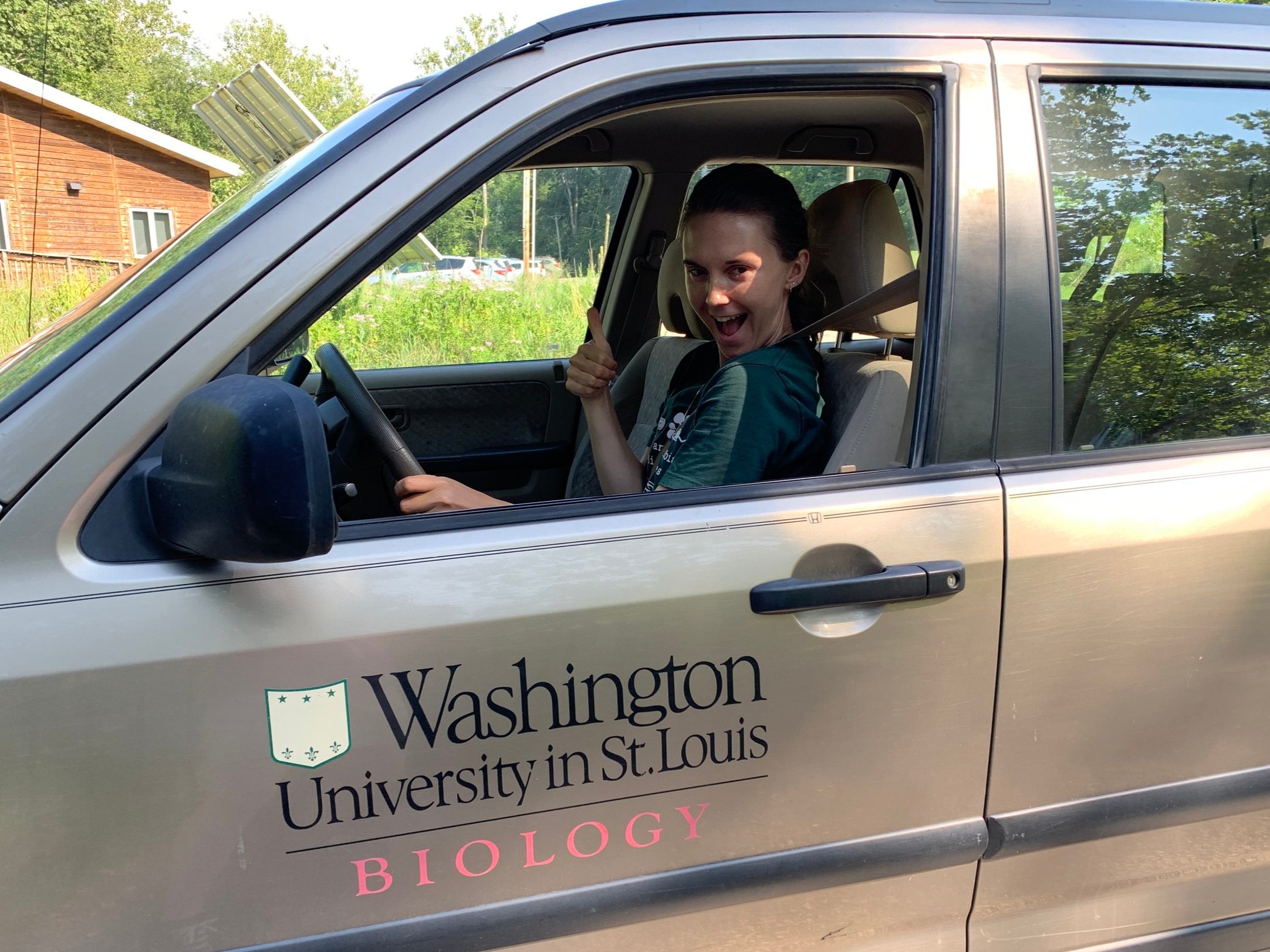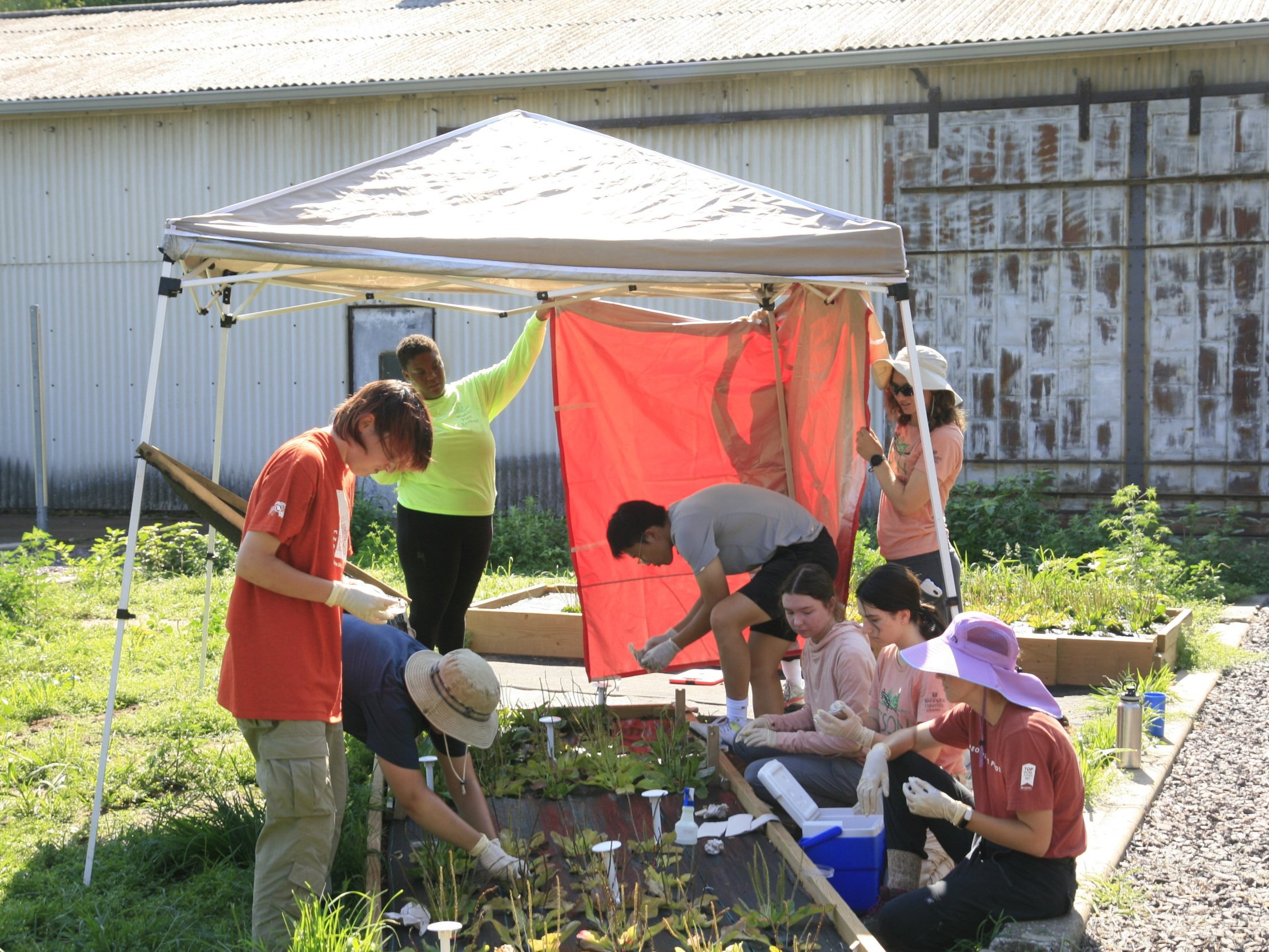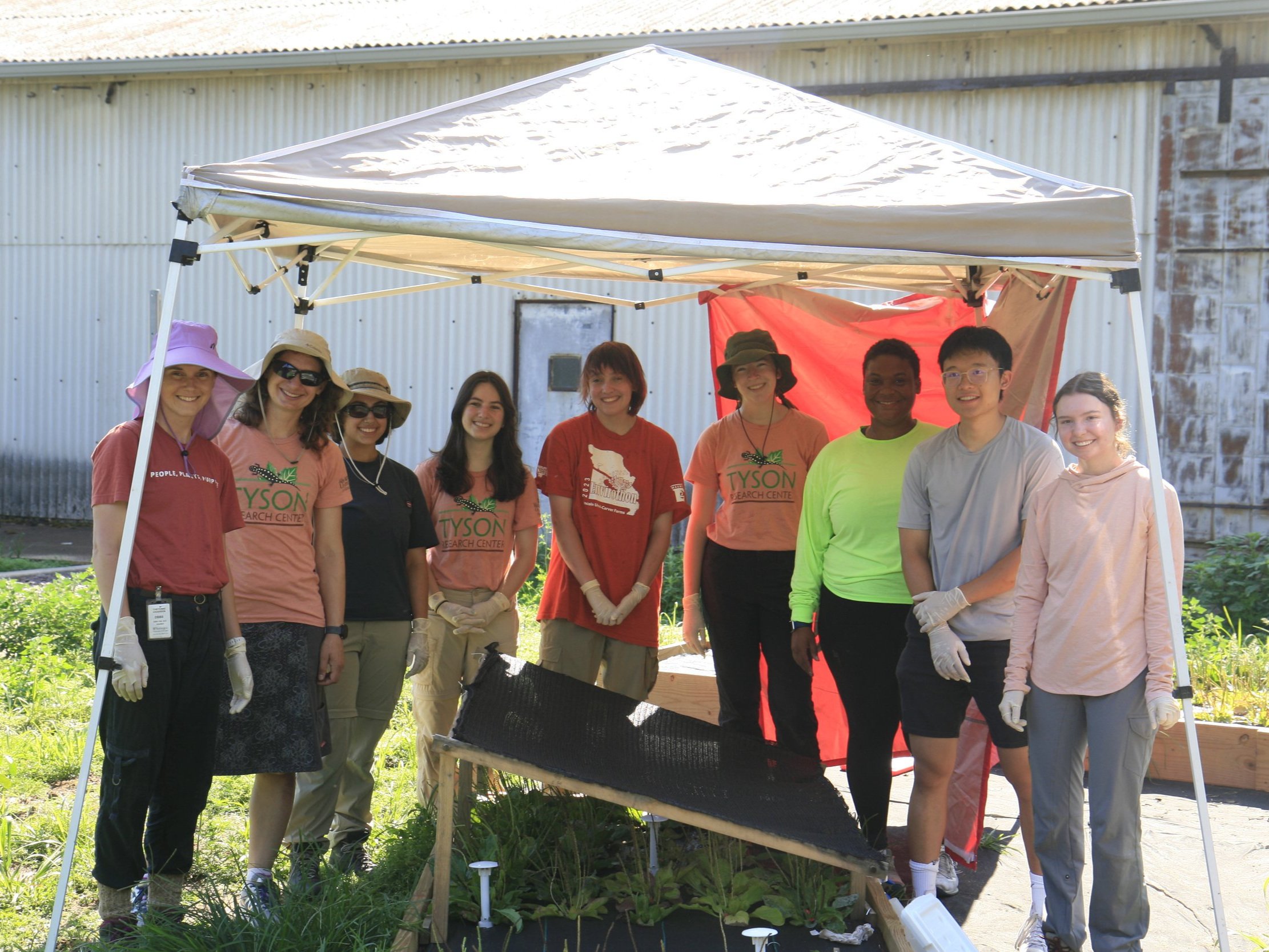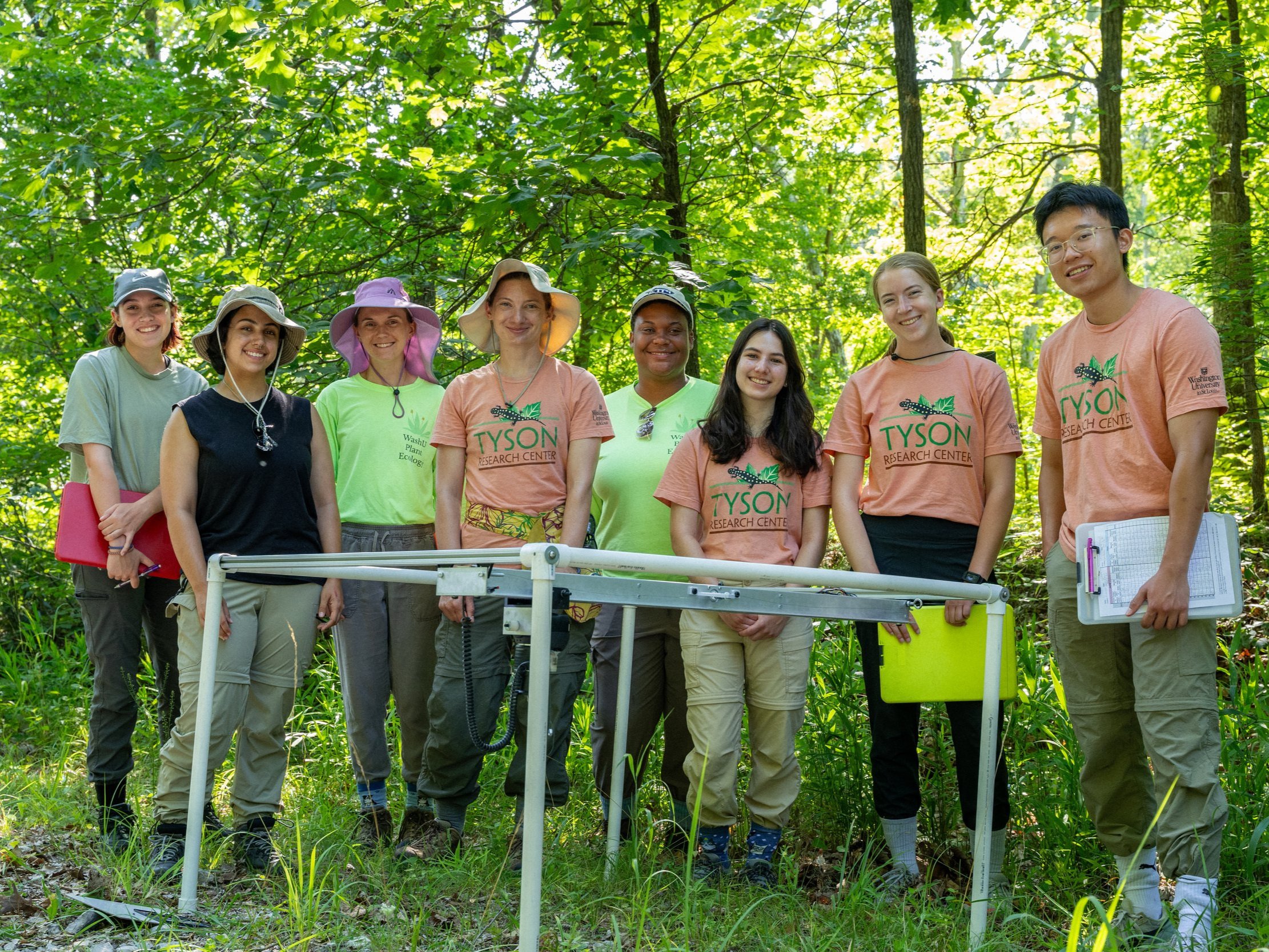Humans of Tyson 2023
Cheyenne Morris
she/her
Graduate Student
Plant Disease Team
How did you get here? What brought you to Tyson?
I'm about to start my third year of my PhD program. I'm in the plant microbial biosciences program at WashU. I've always been interested in plants and how they are responding to climate change. In my previous lab, I got to experience the heat stress side of things, but I always wanted to apply that to how plants are dealing with pathogens under heat stress. When I was looking for a lab to join, I connected with Rachel [Penczykowski] and all of her ideas aligned with my ideas. That's how I got involved in her lab. Part of my project is common garden experiments and they take a lot of work. I think there's close to 500 plants involved in this process, so there's a lot of plants to collect data and tissue from. We thought it was a great idea to have that be a part of the Tyson summer program. The students have been phenomenal and so instrumental in helping us collect this data and maintain the gardens. It's hot and tiring sometimes, but the team has learned to have fun with it. We started making some graphs the other day to start analyzing the data, so it’s cool to see all our hard work.
What have you and your team been up to?
The lab is overall interested in how wild plant populations are impacted by different environments, pathogens, and pests. Our team studies a common weed, Plantago rugelii. It gets infected with a fungus called powdery mildew — when spores land on the leaf surface they grow into the leaf, extract nutrients, and leave a powdery appearance on the leaf. It's really a cool process! My project is heavily relying on the Plantago/powdery mildew relationship.
“I have learned that I love project management. It’s nice to see all of the plans come to fruition.”
This morning we were at two of our common garden sites collecting leaf tissue from our Plantago plants. We have raised garden beds set up at two rural, two suburban, and two urban sites. We've taken genotypes of Plantago from different populations: four urban, four suburban, and four rural parks. Each genotype is represented in the beds across the sites. We're seeing how plants, when they're taken out of their native environments, fare in a new environment. Since all those plants came from different backgrounds but now have a shared environment, we can see how they are different from each other and how they're responding differently. We do monthly sampling of the beds. We take leaf tissue, which I'll later use for RNA sequencing, as well as collecting phenology data on the plants — What's their current flowering stage? Are they currently infected with powdery mildew? How much damage do they have?
What has surprised you about this summer?
I think setting up my experiments… it took a lot of work. It’s a lot of logistical planning from my personal end of being a co-mentor on the team. Making sure that data collection methods are consistent, or deciding what day and time we should sample. Obviously the weather varies but the most surprising thing is just all the planning behind everything. Building the beds, growing the plants, and doing the math of how many plants can fit in a bed. So it's been a lot, but I’ve also really enjoyed it. I have learned that I love project management. It’s nice to see all of the plans come to fruition.





